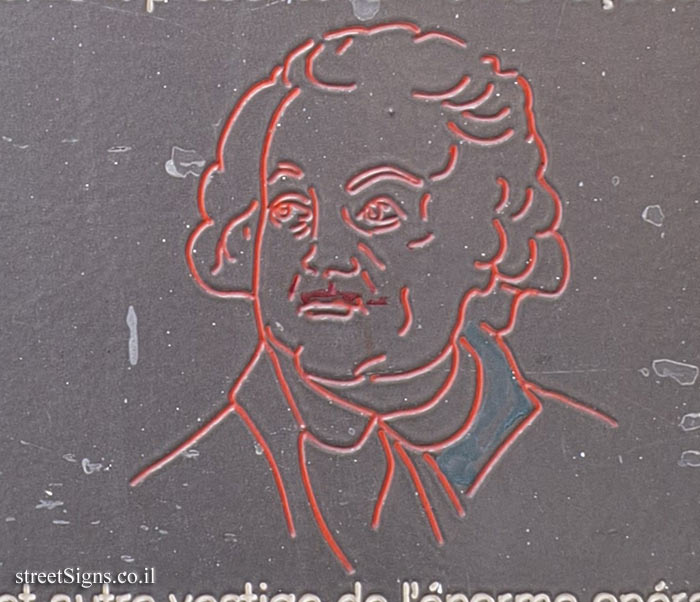One of the series of signs describing historical places in Paris. The signs were placed starting in 1992 and are also called sucettes Starck (Starck’s Lollipops) after Philippe Starck who designed them.
The sign depicts the house where the financier Maximilien Radix de Sainte-Foix lived, after whom the house is named, and Honoré Gabriel Riqueti, comte de Mirabeau, a French statesman during the French Revolution, whose portrait appears in the center of the sign
The building was photographed on the same day
 Click for a larger image
Click for a larger image The illustration in the center of the sign is shown here at magnification
 Click for a larger image Translation of the text on the sign
Click for a larger image Translation of the text on the sign:
[An illustration of a ship, symbolizing the symbol of Paris]
History of Paris Hôtel Radix de Sainte-Foix On land formerly owned by the Mathurins monks, the farmer general Charles Marin-Delahaye had twenty-eight hotels built at the end of the 18th century by the architect Aubert. Here lived the financier Radix de Sainte-Foix in 1780, and Mirabeau in 1789. A garden terrace decorated with trellises, pyramids, triumphal arches and false ruins intended to hide the chimneys occupied the roof until the 19th century . Two small Chinese bridges spanned a rivulet which distributed water into the dining room and, from the terrace, into the bathrooms of the building. Opposite, at number 2, the Hôtel d’Aumont has the same rotunda facade.
[Portrait of Honoré Gabriel Riqueti, comte de Mirabeau]
This other vestige of the enormous real estate operation of Marin-Delahaye was inhabited, from 1785, by Marshal d’Aumont, Duke and Peer of France, who rallied the Revolution with enthusiasm and received as a reward the command of the National Guard .

 Click for a larger image
Click for a larger image  Click for a larger image
Click for a larger image  Click for all signs belonging to The History of Paris (Starck's Lollipops)
Click for all signs belonging to The History of Paris (Starck's Lollipops)
 85 Meter |
85 Meter |  146 Meter |
146 Meter |  177 Meter |
177 Meter |  225 Meter |
225 Meter |  279 Meter
279 Meter